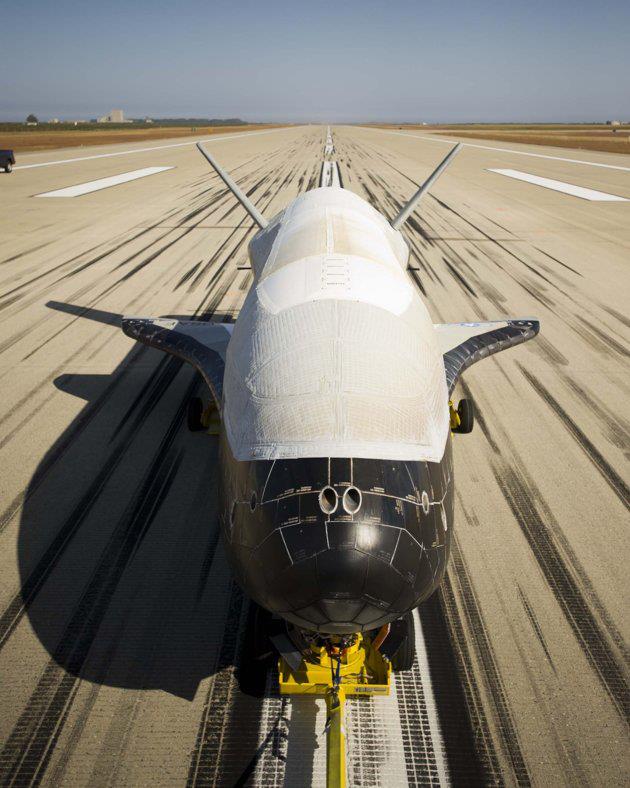
File photo of the US military’s X-37B test vehicle after a landing in 2012.
Boeing
China has launched its top-secret military spaceplane for a third time, days after the US military’s winged spacecraft was grounded for several weeks due to problems with its SpaceX rocket.
Observers believe China’s spaceplane looks much like the US military’s X-37B, a reusable craft that Pentagon officials are similarly tight-lipped about. But there’s a distinction in that US officials will publicly discuss, at least in broad terms, the purpose of the X-37B and release images of the spacecraft.
The US military has two X-37Bs in its inventory, each with a cargo bay that could fit a large refrigerator. They resemble small space shuttles, with dimensions about one-quarter those of NASA’s retired shuttle orbiters. The X-37B spaceplanes have flown in space six times, logging missions as long as two-and-a-half years, thanks to deployable solar panels that generate power for greater endurance.
The seventh X-37B flight was supposed to launch this week from Florida, but officials called off the launch to resolve technical issues with its Falcon Heavy rocket.
Then, on Thursday, China sent its own spaceplane aloft on a Long March 2F rocket from the Jiuquan launch base in northwestern China. The Long March 2F is typically used to launch Chinese astronaut crews into orbit but has been modified to accommodate China’s unpiloted robotic spaceplane inside its payload fairing.
An even plane
There’s no suggestion that the US and Chinese spaceplanes are spying on one another because their orbits do not bring them close together. However, the supposed similarities between the US and Chinese military spaceplanes are hard to ignore.
“It’s no surprise that the Chinese are extremely interested in our spaceplane, and we’re extremely interested in theirs,” said Gen. Chance Saltzman, the US Space Force’s senior officer serving as the military’s chief of Space Operations. “The ability to put something into orbit, do some things, and bring it home and take a look at the results is powerful.
“These are the two of the most watched objects on orbit while they’re on orbit,” Saltzman said Wednesday in response to a question from Ars at the Space Force Association’s Spacepower Conference in Orlando, Florida.
“It’s probably no coincidence that they’re trying to match us in timing and sequence of this,” he added.
In a brief statement, China’s top state-owned space industry contractor, CASC, referred to the payload on Thursday’s super-secret rocket launch as a “reusable test spacecraft.” China hasn’t published any photos.
“The test spacecraft will operate in orbit for a period of time and then return to a scheduled landing site in China,” CASC said. “During this period, reusable technology verification and space science experiments will be carried out as planned to provide technical support for the peaceful use of space.”
Despite describing the spaceplane as a vehicle for peaceful use, Chinese officials closely guard details about it. In all likelihood, the spaceplane is actually carrying out a military mission, perhaps testing new space technology for use in various military applications like surveillance, propulsion, or communication.
This is the third flight of China’s spaceplane, following a 2020 mission that lasted two days and the longer 276-day mission that ended in May. On both missions, China’s winged spacecraft released a small object in orbit, perhaps to shadow the spaceplane and test rendezvous, proximity operations, or in-orbit inspection tech.
On both occasions, the Chinese spaceplane returned for landing on a runway near the Lop Nur nuclear testing site in northwestern China.